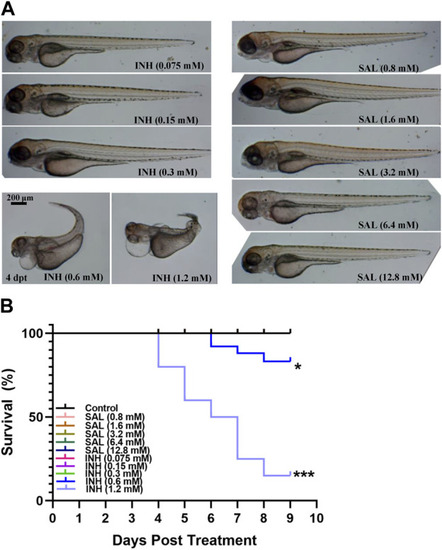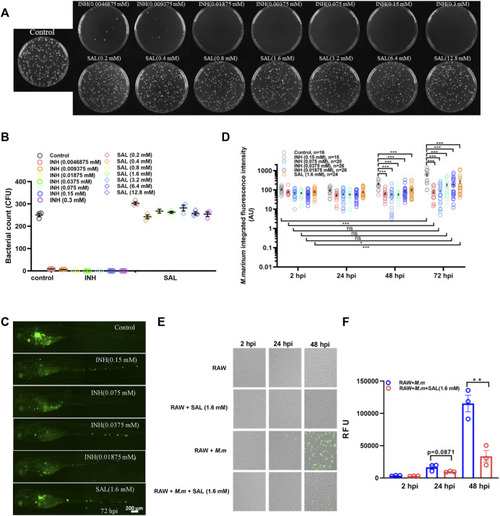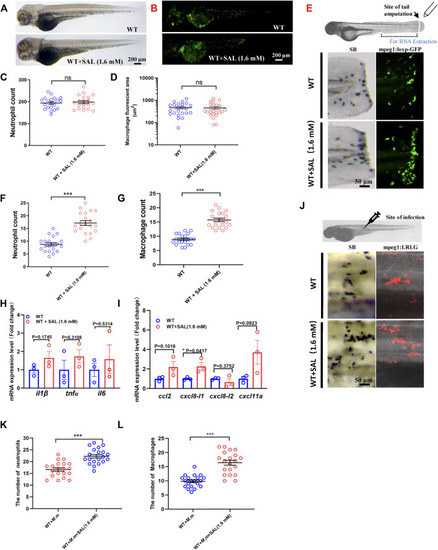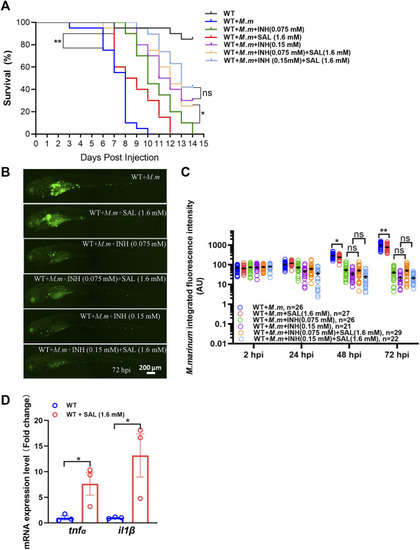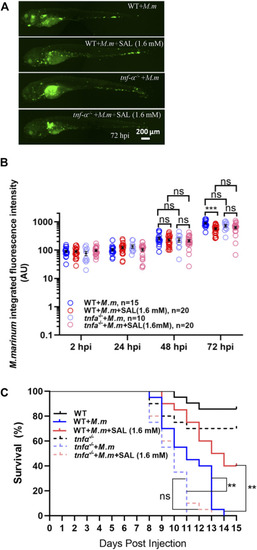- Title
-
Tibetan medicine salidroside improves host anti-mycobacterial response by boosting inflammatory cytokine production in zebrafish
- Authors
- He, S., Fan, H., Sun, B., Yang, M., Liu, H., Yang, J., Liu, J., Luo, S., Chen, Z., Zhou, J., Xia, L., Zhang, S., Yan, B.
- Source
- Full text @ Front Pharmacol
|
SAL has no obvious teratogenic effect on the growth and development of zebrafish. |
|
SAL has bacteriostatic activity |
|
SAL promotes the recruitment of innate immune cells to the wound and infection sites. |
|
Combined treatment of SAL and INH significantly improve the survival of zebrafish during mycobacterial infection. |
|
Tnfα is required for SAL-mediated protective effects during mycobacterial infection. |

